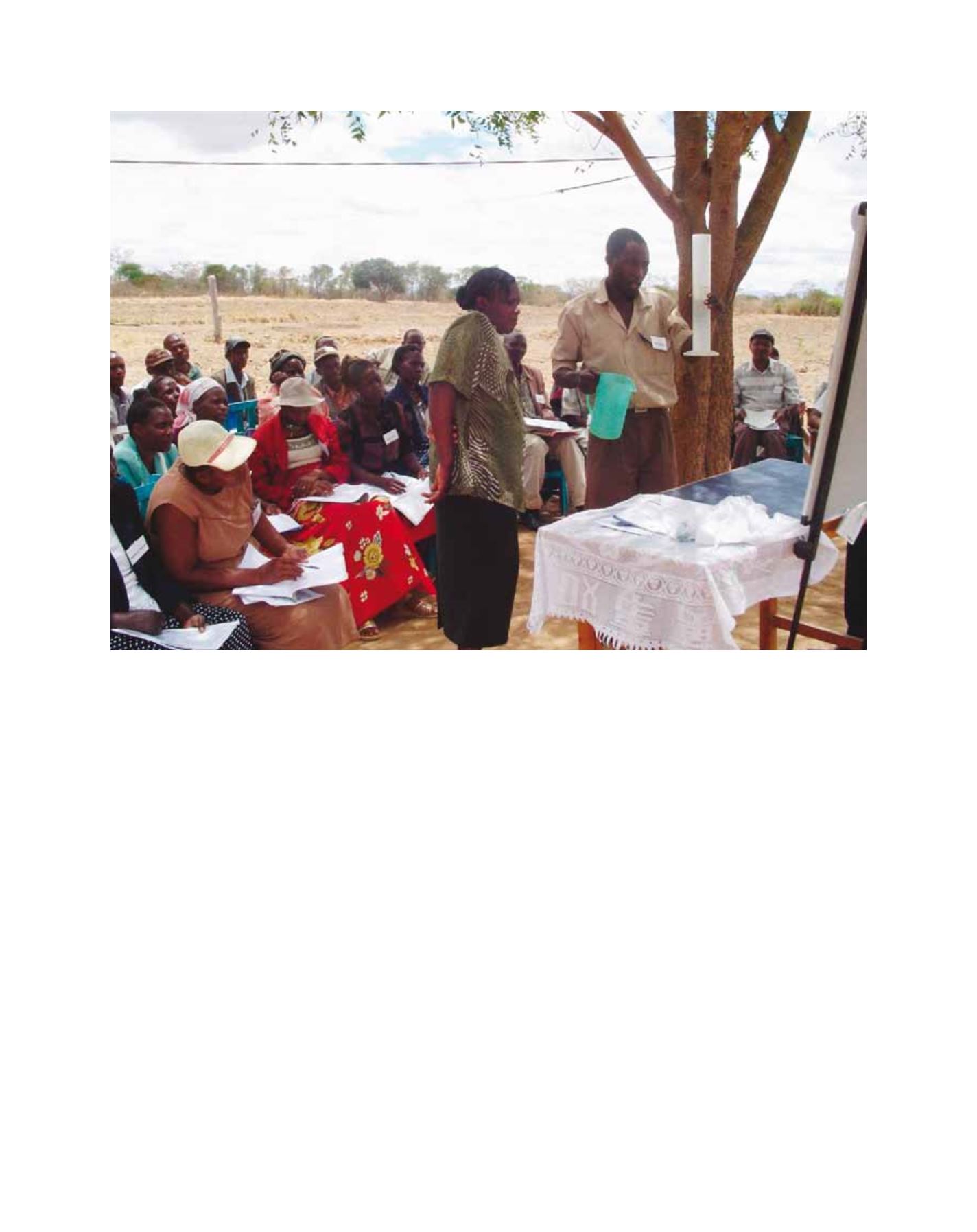

[
] 243
C
ommunities
low levels of cash and labour investment, and acts as
a major deterrent in optimizing input use and taking
advantage of improved technologies. We consider this
as one of the primary reasons for low levels of adop-
tion of improved technologies in the drier areas.
Perception 3: climate forecasts are unreliable
In general, both farmers and the general public view
climate forecasts with a lot of scepticism. Much of
this is due to the misunderstanding and misinterpre-
tation of the forecasts that come with different time
steps, different levels of prediction skill and differ-
ent spatial resolutions. Often users cannot generally
distinguish between short-range weather forecasts
and long-range climate forecasts and their potential
applications. Seasonal climate forecasts can form
a basis for farmers to plan and manage their farms
better, since many management decisions such as
crops and the varieties to be planted, proportions of
land to be allocated to various crops and the level of
investment on inputs need to be taken well before
the season starts. Despite their value and useful-
ness of forecast information, its use by smallholder
farmers remains very low because of perceived poor
reliability, lack of awareness of the potential applica-
has grown. The implication of this unsupported perception is that
farmers do not pay adequate attention to the actual yield-limiting
factors such as soil fertility since they strongly believe that climate
change is the main driver for low productivity and that not much
can be done to manage it.
Perception 2: climate is too risky
Farmers are well aware of the season-to-season variability in their
climates. They generally classified the seasons as good, not so good
or average, and very dry or poor based on criteria that included
factors such as crop yields, early and late onset of the rainy season,
and the amount and distribution of rainfall. Most farmers were able
to recollect how the season that preceded the survey was, with 49
per cent able to recall the conditions that existed during the previ-
ous 10 seasons over five years (there are two seasons per year in
Kenya). In general, there is a good consensus between the farmers’
rating and the observed conditions for seasons that are either good
or poor, except for one or two seasons out of the 10. However,
their ability to estimate the frequency distribution of different
events and discern long-term trends is more subjective. Farmers
tend to attach greater significance to negative events or impacts,
which leads to a biased estimation of the frequency of occurrence
of negative events. This has important implications in their assess-
ment of risk and in subsequent decision-making. Their perception
of higher risk results in a preference for techniques that require
A farmer group in Mwala, Machakos, Kenya doing an exercise aimed at understanding variability in rainfall and evaluating the reliability of seasonal climate forecasts
Image: ICRISAT
















